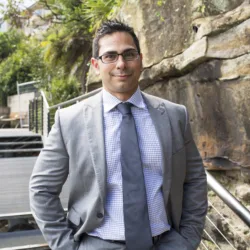How design thinking delivers benefits for everyone
Authors

Celine Cannam
View bioHow often do we hear the phrases “business as usual” “standard practice” and “but, that’s how we’ve always done it”? Probably too often – and that is one of our biggest challenges as an industry.
The fact is, we have the tools to do things better and we need to do things differently. The business of design, delivery and operation of buildings has changed, and the goals have shifted. Property buyers in both the commercial and the residential sector are pushing for sustainable options that - even a year ago - were not high on the agenda.
Residential buyers increasingly want to avoid gas appliances in their homes and care about their prospective home’s energy rating. Commercial purchasers want a high NABERS rating and evidence that the indoor environment quality is excellent. Overall, we are seeing a rapid shift towards less carbon-intensive and healthier assets.
To achieve this, we need to apply design thinking from the outset. Doing that well means not rushing the process, engaging effectively with the whole project design and delivery team, and using the digital tools that support testing new ideas. Digital tools such as energy and thermal modelling, parametric design, digital engineering, BIM, project management platforms and digitised Quality Assurance processes are a way to have confidence in new solutions. They can also deliver a time and cost saving throughout delivery that balances out the additional effort in the design and planning phase.
Globally, the adoption of technology has enabled teams to build faster and smarter. That said, good design takes time and doing it right first time should be our aim. Setting up the digital tools that will enable minor changes and swift updates is what are we looking for. Investing this time then helps prevent common issues such as delivery of projects that experience high rates of rework, do not perform optimally for energy-efficiency or occupant comfort, or have unacceptable defects or non-compliance issues post-completion.
When teams adopt the technology approach and know they can confidently innovate and invent evidence-backed design ideas, they have the urge to push forward and strive for continual improvement. The focus shifts from ‘this is how we’ve always done it’ to ‘how can we do this better?’
The perennial issue of money and time costs becomes less of a factor when there are tools, platforms and technology-enabled processes saving time. Being more efficient brings costs down.
It is also more engaging for a design and delivery team to develop something new and find a better way to work. In my experience as the lead building services design engineer on major projects, when someone is given an idea, for example, how can we set a project up quickly, and go through the steps to do that and see the benefit, it is motivating.
This is part of how we encourage those who have not yet adopted technology to do so, by creating those opportunities. When someone sees the efficiency and accuracy of a digital approach compared to a procedure that might have taken five hours previously using manual processes, they rapidly become a convert.
In many cases, that one experience can be the turning point, because who wants to go backwards once the benefit has been experienced? Across a company, it soon becomes possible to track how much time is being saved per employee or per job over a year and those kinds of metrics encourage further technology adoption and further evolution through investing the time and costs saved back into progressing capabilities. Even a saving of 20 minutes per person, per task when multiplied across a company and over a year adds up to a substantial amount of resource available for other things.
But a word of caution here: it’s important we don’t use increased efficiency as a reason to rush things, especially the design development and project planning stages. Effective collaboration is often stifled by trying to rush to get things out. It is important to carefully work through all designs and solve issues properly and thoughtfully. This is where digital tools that can demonstrate a solution are invaluable by showing in 3D how a proposal will work. This can also be shared with the entire project team, so when everyone gets to site there are no surprises.
So much of the quality control has also already been done, for example, access issues identified and resolved, maintenance requirements addressed in design and documentation. The modelling process also enables a team to look at options for buildability and consider approaches such as prefab, modular or design for manufacture and assembly for parts or even most of a project.
The spatial relationships between structural, mechanical, and other building systems can be fine-tuned, so there’s no default to needing to squeeze in risers, for example, because they can be designed more efficiently. Everything can be tailored to suit the actual space, likely occupancy levels, hours of operation and the thermal performance of the building. Over-sizing and the associated costs become a thing of the past.
In general, program cost is largely controlled because the model enables everything to be checked and coordinated across procurement and program milestones.
This is fundamental design thinking. And digital tools mean it is not just restricted to architects and design engineers. Every player in the project team can be a design thinker. This approach also facilitates more sustainable outcomes and makes them both attainable and also pragmatic.
This blog was originally published by Sourceable





